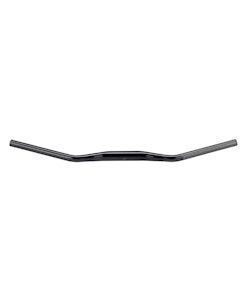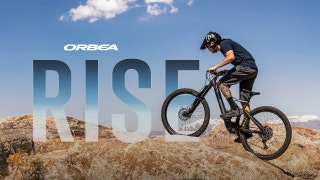Along with your saddle and pedals, bike handlebars are among the key touchpoints that connect rider with bike. This is where your hands are placed both to provide overall stability on the bike and control steering. Bike handlebars are also where key cockpit controls are mounted, which can include grips, brake levers, shift levers, dropper post remotes, remote lock-outs, GPS devices, and even a bell. Choosing the right bike handlebars for your needs is a matter of sorting through several critical criteria, starting with type and size. Here is a basic breakdown of the two primary bike handlebars options.
Dropbar Bike Handlebars: Also known as road bike handlebars, these are the type of handlebars you find on most road, gravel, and cyclocross bikes. They are easy to spot thanks to their swirling shape, which provide multiple hand positions when riding. For sprinting or maximum aero efficiency, place your hands in the drops, which are at the bottom of drop bar bike handlebars. For climbing or casual cruising when you don’t need immediate access to your brakes and shift levers, the tops are the place to be. Or rest your hands on the hoods just above the brake/shift levers so change gears or slow down at a moment’s notice. You can also switch up hand placement to enhance comfort, as sometimes just a slight change in position can help alleviate neck, back, or hand pain or numbness.
When choosing road bike handlebars, you’ll need to consider construction material (aluminum and carbon are the most common), as well as width and amount of drop. Material choice is typically a budget-based decision, with carbon bars usually being lighter, but also more expensive. Road bike handlebars width should roughly equal the width of your shoulders, with the most common options being 40cm, 42cm, and 44cm. Drop is typically a matter of personal preference, with some riders opting for a shallower set-up, while other prefer a standard drop. If you have any question about road bike handlebars, call one of our JensonUSA.com Gear Advisors, who can help you make the best buying decision.
Mountain Bike Handlebars: As the name indicates, this type of bike handlebars are found on mountain bikes. Unlike drop bar options, you’re limited to a single hand position (on the grips). But just like road bike handlebars, this is where all your key cockpit components will reside. Choosing the right mountain bike handlebars will include deciding on construction material, amount of backsweep and upsweep (also known as rise), width, and clamp diameter.
Just as with road bike handlebars, material choice is typically a budget-based decision, with carbon and titanium bars being lighter but also more expensive than aluminum options. Width, which typically ranges from 680mm to 800mm, is usually a matter of personal preference and riding style. More gravity focused mountain bikes usually have wider bike handlebars, while cross-country steeds utilize narrower bars. Often mountain bike handlebars are sold in just one width, and then if necessary can be cut down. Clamp diameter is most often 31.8mm, but 35mm options are also available, particularly for gravity-focused mountain bikes, where the extra stiffness is appreciated. Of course whichever clamp diameter you choose will need to match your stem, so make sure to double check.
Along with the two primary types of bike handlebars are other options such as aero bars for triathlon and time trial bikes, urban and cruiser bike bars, and BMX. If you have any questions about bike handlebars, give one of our JensonUSA.com Gear Advisors a call at 888-880-3811 and they’ll get you headed in the right direction.



































































































































































































































